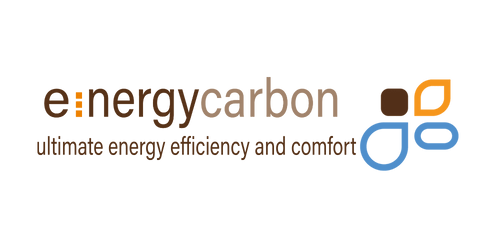Nick Gander, founder of Energy Carbon, explains why low-carbon, far-infrared electric heating in a modular home heating perfectly complements sustainable modular construction.
When it comes to housing, the UK has its work cut out.
It’s estimated the country needs to be building nearly 350,000 homes every year to meet rising demand – which is a huge step up from where we are at the moment.
We need more housing, more quickly – and that requires the construction sector to become a lot more productive.
But if that wasn’t challenging enough, we have to achieve all that while drastically reducing the built environment’s ecological impact too – both in terms of the construction process, and buildings’ carbon footprints over their lifetime.
That might sound like an impossible square to circle, especially given the rapidly shortening time we have to do it in. It’s only thirty years until 2050, by which time the UK’s committed to reaching net zero.
But it’s possible we’ve been looking the solution in the face for decades and not realised it in the form of alternative heating for MMC
Modular construction
Modular construction is nothing new. Millions of British people, in fact, grew up in prefabricated housing built after the Second World War.
But thanks to enormous advances in technology, modern modular buildings are a world away from the flimsy prefabs of the past – and offer a quicker, cheaper and much more sustainable alternative to conventional brick-built construction.
Modular construction is green because it tends to produce much less waste, and also because whole buildings can be disassembled and used again if necessary.
However, many modular buildings still aren’t as green as they could be – and that’s because very often how they’re heated gets overlooked.
How green are the green alternatives?
If you take a sustainably-constructed building, then fit it with a heating system that’s not environmentally friendly, you’ve not got a sustainable building any more.
In the decade ahead, we’re likely to see a drastic reduction in the use of worst-offending power sources like coal, oil and gas, and the old-fashioned heating systems that use them.
However, some alternatives that look very green on the surface aren’t anywhere near as sustainable as they seem once you start digging a little deeper.
Air-source heat pump technology is often presented as the future of heating, but it’s got significant downsides – they’re very expensive, require specialist technicians to install and maintain, have short lifespans, and in some cases the refrigerant they use can itself contribute to global warming.
Far-infrared
A much better solution – and one that’s very in keeping with the speed and ease of modular construction – is far-infrared.
Infrared radiation is produced by the sun. It’s measured in microns, with ‘near’ infrared sitting between 0.76 and 1.56 microns, ‘mid’ infrared measuring between 1.5 and 4 microns, and anything above 4 microns classed as far-infrared.
Between 8 and 10 microns, to be precise, is the most beneficial to the human body – and it’s exactly this sort of infra-red radiation that the products we supply at Energy Carbon provide.
Fit it … Forget it and no more radiators
Traditional heating systems work on a convection system. Radiators or electric storage heaters draw cold air from the floor, and heat it so that it rises to the ceiling, where it cools, falls to the floor and the process continues in a loop – which can result in poor air quality, as dust particles rise.
Convection can be slow, expensive, and, often, totally ineffective – all you have to do is open the front door, and the heat escapes, taking you right back to square one. This mix of hot and cold air can also create moisture that causes mould and mildew, and, more importantly, health issues for occupants.
Far-infrared electric heating in a modular home is different. Far-infrared does not create moisture as it is not heating the air. The radiant heat warms objects in the room instead of the air itself.
The objects in turn release their own heat, and the room is kept at a far more even, comfortable temperature. With no convection roll, you get a dramatic drop in the amount of dust particles and or mould, which can alleviate allergen-induced asthma.
Additionally, occupants ‘feel’ the energy themselves, much the same as they feel the warmth from the sun. This feeling of warmth allows the heating to run at around 1-2 degrees lower than conventional heating, thus saving further energy.
The far-infrared solution Energy Carbon provides was originally developed by students at the University of Stuttgart.
They had worked for six years trying to create an energy-efficient heating system which was effective, easy to install, and completely safe.
Using industry waste materials, the students engineered a far-infrared heating system which is sustainable, had great carbon-reducing credentials, and produced radiant heat which could travel up to three and a half meters.
The technology is now widely used across Germany, and over 100,000 linear metres of it have been fitted to date.
What’s more, where alternatives need extra skilled trades and engineers to install and maintain, our heating products are incredibly simple to install into the walls or ceilings of a room, using existing trades and requiring no ongoing yearly maintenance.
Fit it … Forget it.
Find out more
In short, we think far-infrared is the future of heating in modular construction – and if you’d like to learn more, get in touch with Energy Carbon today.
Call 0203 507 1659

